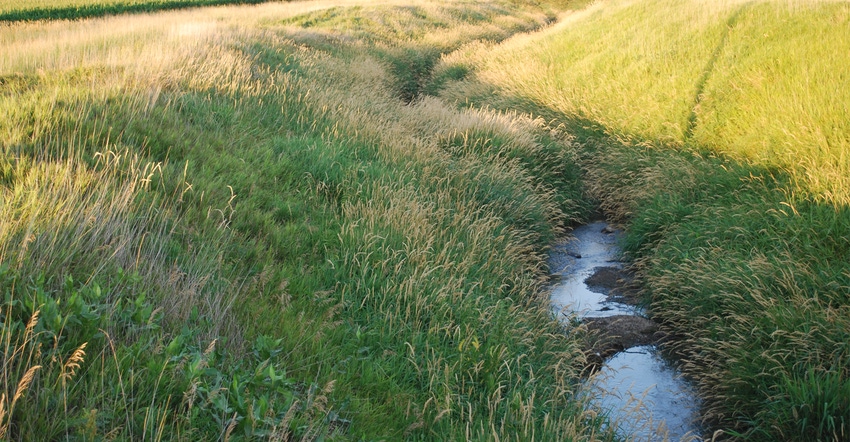
South Dakota’s Department of Agriculture has now joined with the state’s Department of Environment and Natural Resources to become the Department of Agriculture and Natural Resources.
The reorganization of the two departments went into effect April 19, after Gov. Kristi Noem announced the plan in August, and in January issued Executive Reorganization Order 2021-03 combining the two departments into the DANR.
“With this merger, we are fostering sustainable agriculture and conservation of our natural resources that we can pass on to our kids and grandkids,” Noem says in a DANR press release. “DANR will be more effective, more efficient and more responsive to the needs of farmers.”
Scott VanderWal, Volga-area farmer and president of South Dakota Farm Bureau, says the organization’s membership warmed to the merger as they learned more about Noem’s proposal.
“We didn’t take a position at first,” VanderWal says. “We said we were going to listen to people and ask a lot of questions.” The Farm Bureau state board took a favorable position to the merger in August, asking delegates to take a favorable position, which they did at the state convention in November.
Streamlining efficiencies
VanderWal says his organization looked at the streamlining of processes and efficiencies for the department, and found the merger saves about $400,000. But more importantly, “for the farmers that have to have both the DNR permits inspected, and facilities like big dairies where the milk inspectors come in, they can do those inspections at the same time, maybe even the same person could do it,” he adds.
In a Frequently Asked Questions document on the merger, it states: “The merger will save taxpayer dollars through efficiencies. By reducing duplication of services, we can eliminate five full-time employee positions — four vacant and one cabinet secretary. Finally, as we cross-train inspectors and field staff, we can minimize redundancy and travel costs.”
Fear of fewer seats at table
South Dakota Farmers Union, though not issuing a statement upon the new merger, has been opposed to the union of the two state departments. In a March press release supporting the passage of Senate Resolution of Disapproval 901 that would have stopped the merger, SDFU President Doug Sombke from Conde said, “Merging these two departments will result in fewer seats at the table for our farmers and ranchers. South Dakota Farmers Union calls upon the 2021 South Dakota Legislature to reject any plan to merge these two departments or any other state agency.”
Sombke’s comments are from his March 4 testimony before the Senate Agriculture and Natural Resources Committee: “An industry creating $32.5 billion annually to our economy deserves its stand-alone department ensuring our family farmers and ranchers remain a priority to the great state of South Dakota.”
His testimony continued: “Our agriculture industry depends upon the Department of Agriculture remaining a stand-alone agency to best serve the many hardworking South Dakota community-minded family farmers and ranchers. Invariably, there will be conflicts on land use, water issues or air quality that will involve modern agriculture. Currently there would be someone from DENR investigating those issues. With the planned merger, we are very concerned about who will stand up and defend agriculture in those scenarios.”
VanderWal acknowledges the concern of merger opponents fearing the loss of focus on agriculture at the state level, but he feels those fears are misplaced due to the “good relationship” with Secretary Hunter Roberts, and the assignment of Lt. Gov. Larry Rhoden as liaison between the state’s farm groups and the governor’s office.
Agrarian roots run deep
Hunter Roberts will serve as DANR’s first cabinet secretary, after serving as the secretary of Environment and Natural Resources and the interim secretary of agriculture.
Roberts, Rhoden and Noem all come from agrarian roots, so VanderWal feels agriculture will always have a seat at the table. “Gov. Noem has a tremendous vision for the next generation of agriculture and is passionate about South Dakota’s natural resources,” says Roberts, in the DANR press release. “Agriculture and natural resource protection go hand-in-hand. Working together as DANR will help us achieve the best outcomes for South Dakota.”
Farm Bureau’s VanderWal adds, “The point we’d like to make is that there are some symbiotic relationships that, hopefully, could take place. People involved with agriculture could be right across the aisle or in the next cubicle with environmental engineers, and they can bounce ideas off each other, asking each other questions. If an engineer is working on a design for a facility, they can readily ask questions of the ag people, and we think there can be some benefits from those people working very closely together, more so than they have before.”
DANR’s mission is to protect and preserve South Dakota’s agriculture, environment and natural resources through effective regulatory services, natural resource
About the Author(s)
You May Also Like






